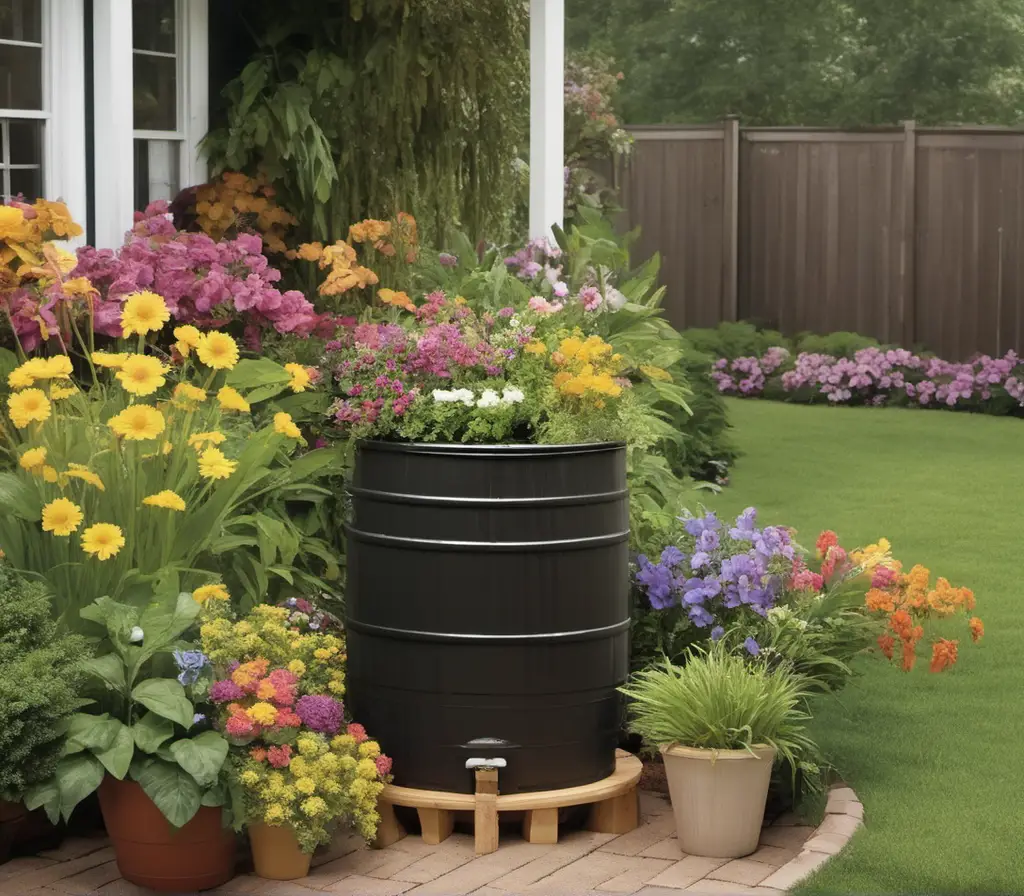Welcome to our comprehensive guide on DIY rain barrel stand projects, where we delve into the world of sustainable water management and creative solutions for your garden. With DIY rain barrel stand, we embark on a journey that empowers you to harness the power of rainwater and make a positive impact on the environment. Whether you’re an eco-conscious enthusiast or a hands-on DIY lover, this blog post offers informative and easy-to-follow insights on the benefits, considerations, installation, maintenance, and DIY projects for rain barrel stands. Join us as we explore the path to conserving water, reducing utility bills, and creating a greener future, one rain barrel stand at a time. Let’s get started!
Benefits of Using a Rain Barrel Stand
Rain barrel stands offer a plethora of advantages that make them an excellent choice for environmentally conscious individuals and communities. Embracing this sustainable solution can have a positive impact on water conservation efforts, cost savings, and the environment. Let’s explore the key benefits of using a rain barrel stand.
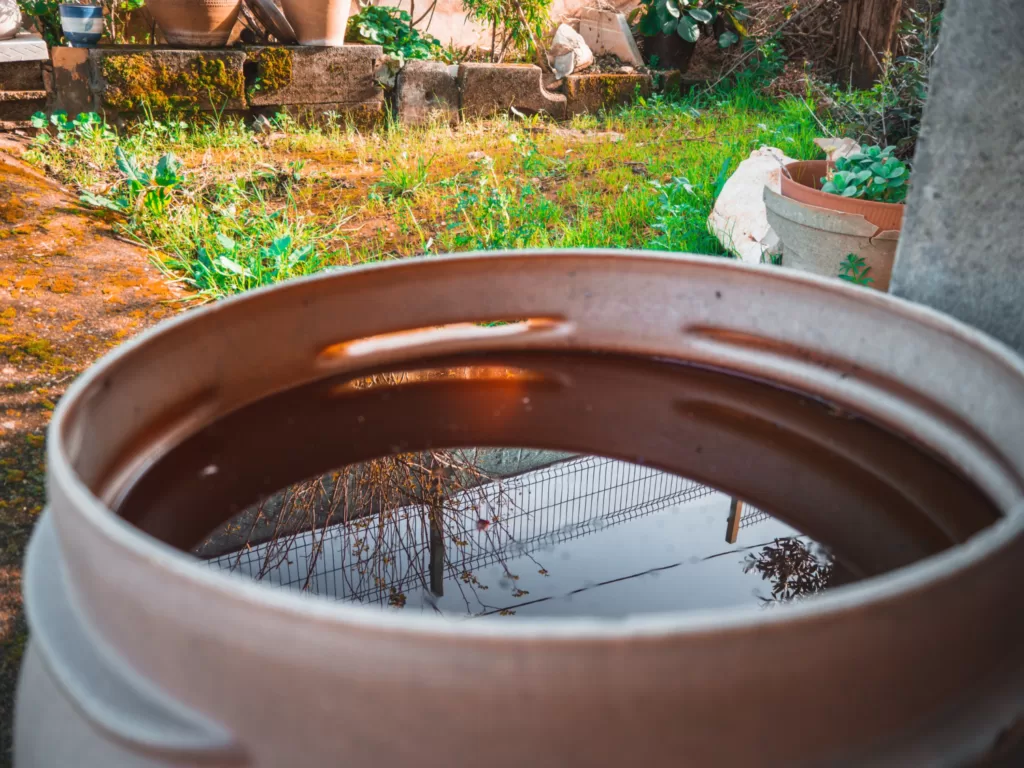
Water Conservation
By capturing and storing rainwater that would otherwise run off and be lost, rain barrel stands help maximize the use of this precious natural resource. The collected rainwater can be utilized for various non-potable purposes such as watering gardens, lawns, and plants. This reduces the need to rely solely on treated water from utility companies, particularly during times of water scarcity or drought.
Cost Savings
In addition to promoting water conservation, rain barrel stands contribute to significant cost savings on water bills. As you use the collected rainwater for outdoor needs, your dependence on municipal water decreases. This translates into lower water consumption from utility companies, ultimately reflecting in reduced water bills. Over time, these savings can accumulate, making rain barrel stands a financially wise investment.
Environmental Benefits
Rain barrel stands play a vital role in environmental conservation. By utilizing rainwater, individuals can help alleviate the strain on local water sources, such as rivers and lakes. Reduced water demand lessens the need for extensive water extraction and treatment processes, leading to a decreased carbon footprint. Additionally, the use of rainwater for irrigation purposes reduces stormwater runoff, which can contribute to erosion and water pollution.
Enhanced Plant Growth
The rainwater collected in rain barrels is typically free of the chemicals and additives found in municipal water supplies. As a result, it provides a more natural and nourishing source of hydration for plants. Using rainwater to water your garden or plants can lead to improved plant growth, healthier soil, and more vibrant vegetation.
Reducing Sewer Overflows
During heavy rainfalls, urban areas often experience sewer overflows, leading to contamination of water bodies. By collecting rainwater with rain barrel stands, you help mitigate the strain on stormwater drainage systems, reducing the risk of sewer overflows and their associated environmental hazards.
Choosing the Right Rain Barrel Stand
Selecting the appropriate rain barrel stand is essential to ensure optimal functionality and stability for your rainwater harvesting system. With various options available in the market, it’s crucial to consider key factors that align with your specific needs and preferences. Let’s explore the essential considerations when choosing the right rain barrel stand.
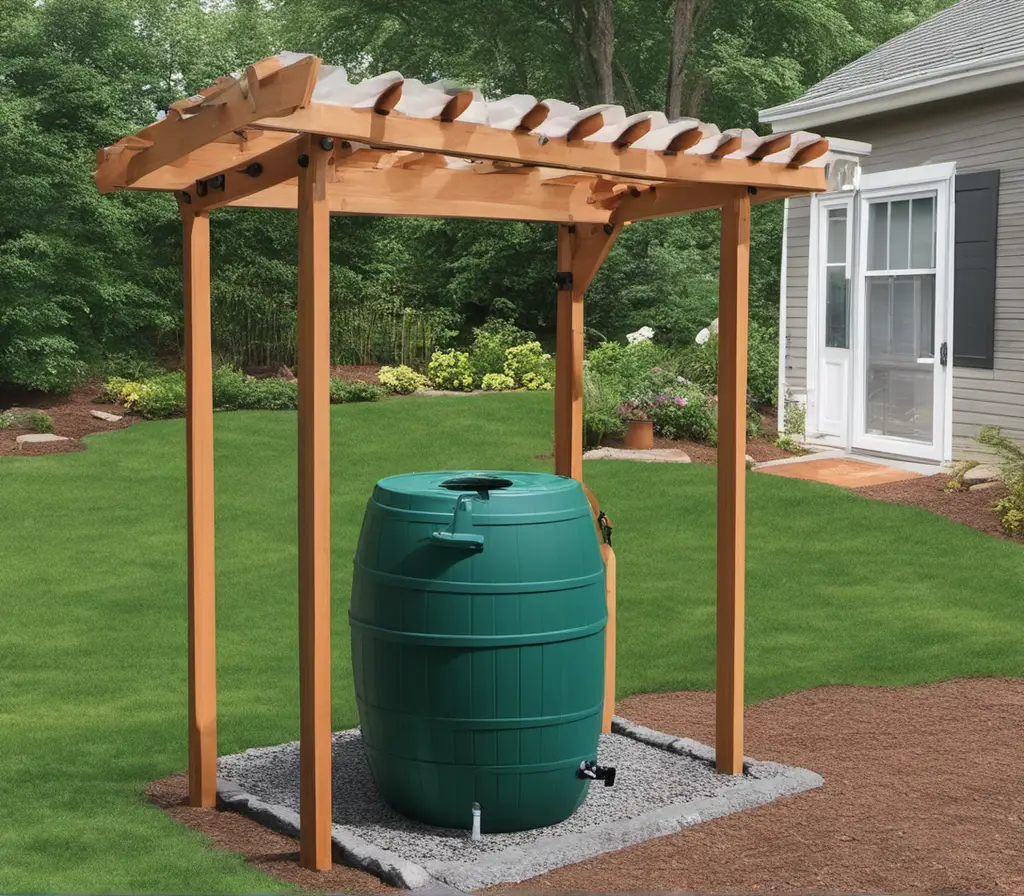
Size and Capacity
Before making a purchase, assess the capacity of the rain barrel you intend to use or already own. Ensure that the stand can support the weight of a full rain barrel, preventing any stress on the structure. Consider the average rainfall in your area and your water usage requirements to determine the appropriate size and capacity of the rain barrel stand.
Material and Durability
Various materials, including wood, plastic, and metal are required for building the stand. Each material has its advantages and considerations. Wooden stands offer a natural and aesthetically pleasing look but require regular maintenance to prevent rot or deterioration. Plastic stands are lightweight and resistant to rust, but they may not be as visually appealing as other options. Metal stands, such as those made from galvanized steel, provide excellent durability and weather resistance. Choose a material that suits your preferences and complements your outdoor space.
Design and Aesthetics
Apart from functionality, the design and aesthetics of the rain barrel stand matter, especially if it will be visible in your garden or yard. Some stands come with decorative elements or finishes that add a touch of elegance to the overall look. Consider how the stand fits into your landscape and select a design that complements your outdoor decor.
Compatibility
To ensure a stable and secure rainwater harvesting system, check the compatibility of the stand with the rain barrel model you own or plan to purchase. Some rain barrels are designed to fit specific stands, while others have more universal compatibility. Double-check the dimensions and specifications of both the stand and the barrel to ensure they are a suitable match.
Installation and Setup
Installing and setting up a rain barrel stand is a straightforward process that requires careful consideration and attention to detail. Proper installation ensures the stability and functionality of the stand, allowing you to harness the full potential of rainwater harvesting. Let’s walk through the step-by-step guide for installing and setting up your stand.
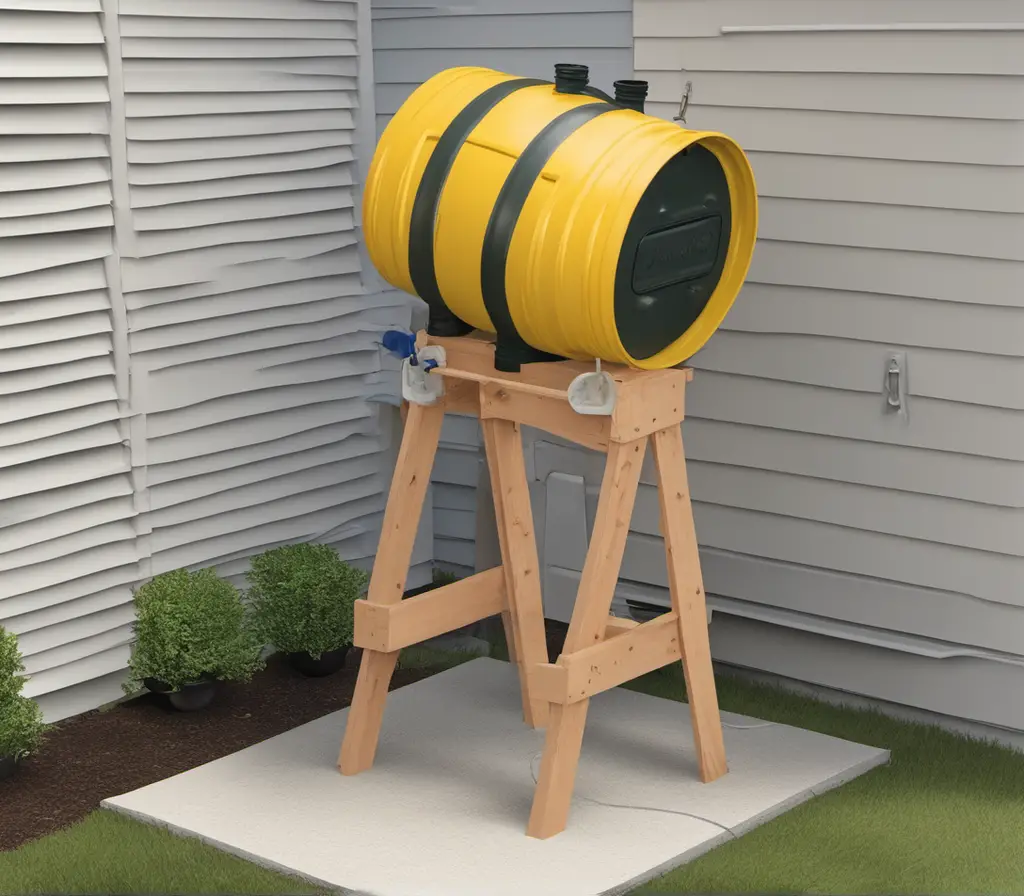
Choose a Level Ground
Select a flat and level area in your garden or yard to place the stand. A level ground prevents tilting or tipping over of the stand and the rain barrel, ensuring the safe collection and distribution of rainwater.
Assemble the Stand
Most rain barrel stands come with clear assembly instructions and pre-cut pieces for easy setup. Follow the manufacturer’s guidelines carefully and ensure all parts are securely connected. Some stands may require the use of tools, such as screws or bolts, to assemble the pieces. Check that the stand is sturdy and well-constructed before proceeding to the next step.
Position the Rain Barrel Stand
With the stand assembled, position it at the chosen location on the level ground. Take note of the height of the stand, as it should be tall enough to allow gravity to aid in the flow of rainwater. The stand’s position should also allow easy access to the rain barrel’s inlet and outlet connections.
Place the Rain Barrel
Carefully place the rain barrel onto the stand, ensuring it aligns with the necessary inlet and outlet connections. The rain barrel should rest securely on the stand, with no wobbling or instability. Double-check that the barrel is level and properly aligned with the stand to prevent any leaks or water flow issues.
Test for Stability
Before fully utilizing the rain barrel stand, give it a gentle shake to test its stability. Make any necessary adjustments to the position or alignment to ensure the stand is firmly in place. A stable rain barrel stand is essential to prevent accidents and to guarantee the efficient collection and distribution of rainwater.
Maintenance and Care
Regular maintenance and care are essential to keep your rain barrel stand in optimal condition and ensure its longevity. By following these simple steps, you can maximize the efficiency of your rainwater harvesting system and continue to enjoy the benefits of using a rain barrel stand.
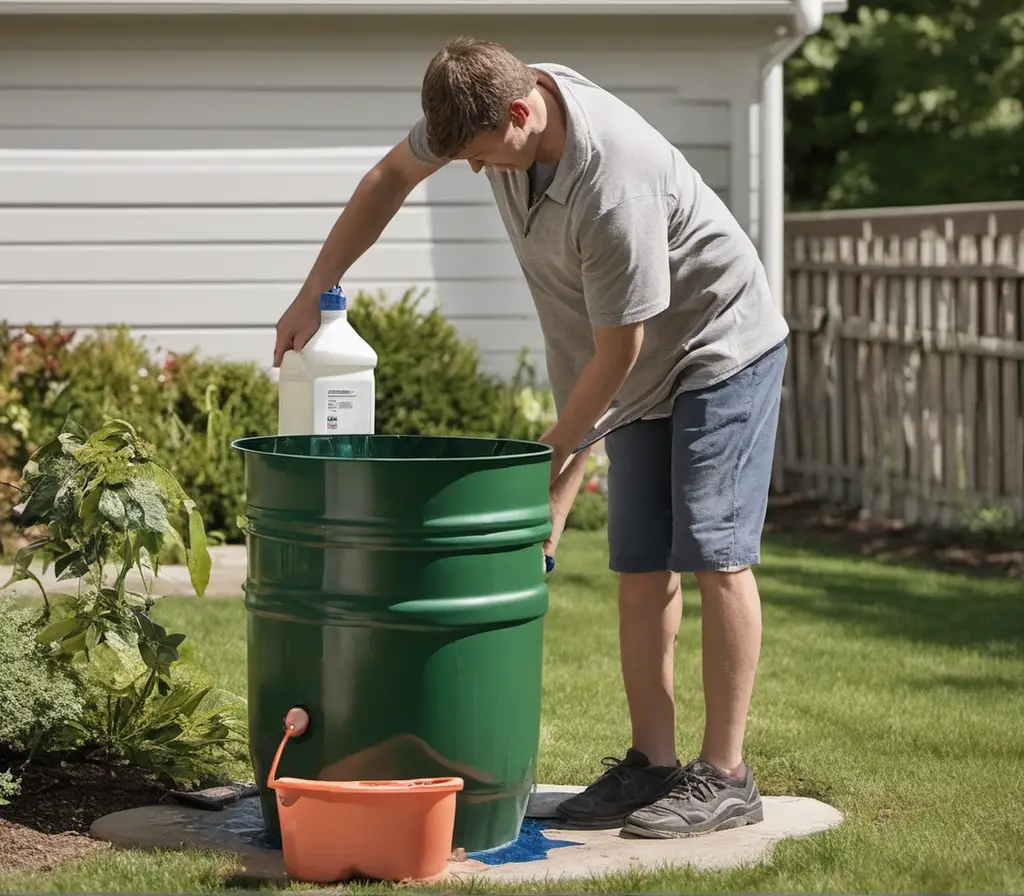
Clean the Stand Regularly
Regularly clean the rain barrel stand to remove any dirt, debris, or algae buildup. A simple solution of mild detergent and water is usually sufficient for cleaning. Avoid using harsh chemicals that may damage the stand’s material or impact the quality of collected rainwater.
Check for Damage
Inspect the rain barrel stand periodically for any signs of wear, rust, or damage. Harsh weather conditions or accidental impacts may cause small cracks or weak spots in the stand. Address any issues promptly to prevent further deterioration and maintain the stand’s structural integrity.
Secure Fittings
Ensure that all fittings and connections on the rain barrel stand are securely fastened. Loose fittings can lead to leaks or inefficient water flow. Tighten any nuts, bolts, or screws as needed to keep the stand stable and functioning correctly.
Winter Preparations
If you live in an area with freezing temperatures, take measures to protect the rain barrel and stand from potential damage. Before winter sets in, empty the rain barrel to prevent freezing and potential cracking. If you plan to continue using the rain barrel during winter, consider insulating it to protect it from extreme cold.
Elevate the Stand
Elevating the rain barrel stand slightly off the ground can prevent water from pooling and accumulating underneath. This elevation helps keep the stand dry and reduces the risk of damage from standing water.
Regularly Inspect for Pests
Rain barrel stands can attract pests, such as insects or rodents, seeking water sources. Regularly inspect the area around the stand for signs of pest activity and take appropriate measures to deter them from nesting or contaminating the collected rainwater.
DIY Rain Barrel Stand Projects
For the hands-on and creative individuals, building a DIY rain barrel stand can be a rewarding and practical endeavor. Designing and constructing your rain barrel stand allows you to customize it to fit your specific needs, while also contributing to sustainable water management. Let’s explore some exciting and straightforward DIY rain barrel stand projects to get you started.
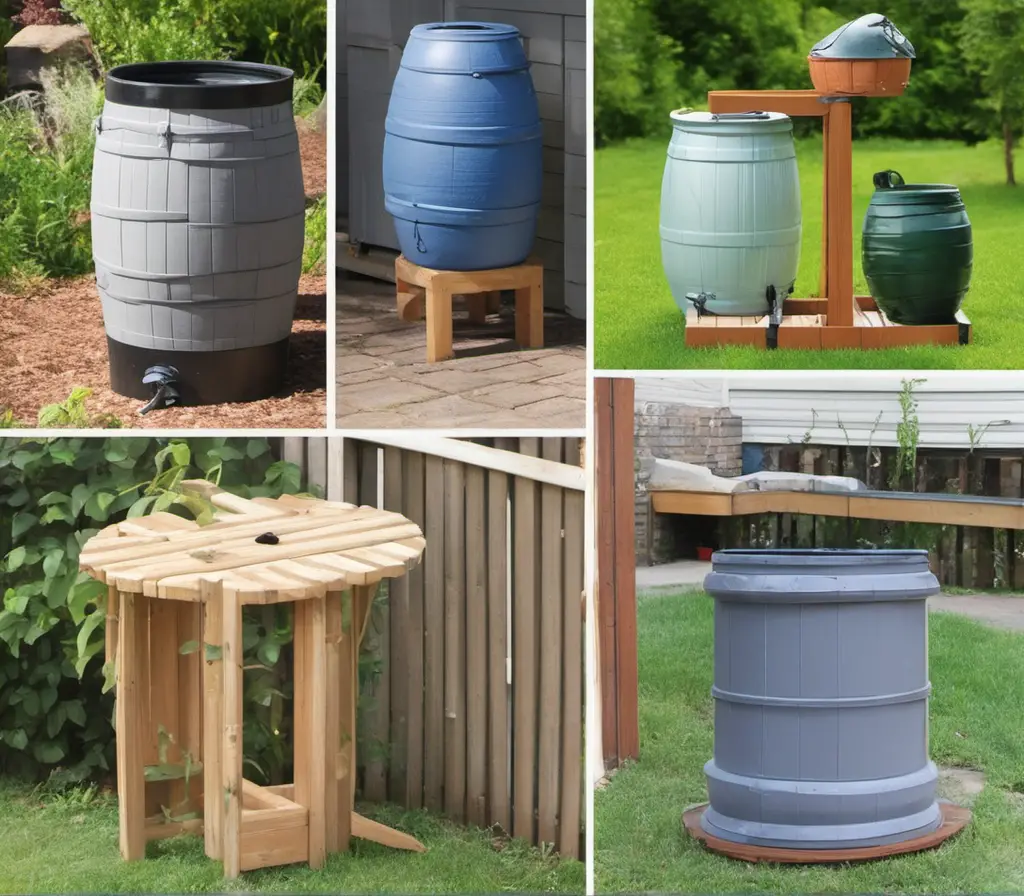
Wooden Rain Barrel Stand
To build a wooden rain barrel stand, you’ll need treated lumber for durability and weather resistance. Begin by measuring and cutting the lumber pieces according to your desired dimensions. Assemble the pieces using screws and ensure the stand’s structure is sturdy and level. Consider adding a protective finish to the wood to enhance its longevity and aesthetics.
Cinder Block Rain Barrel Stand
An affordable and straightforward DIY option is using cinder blocks to create a raised platform for your rain barrel. Simply stack the cinder blocks in a stable arrangement to match the height you desire. Ensure the blocks are level and securely in place. The hollow sections of the blocks can also serve as storage compartments for gardening tools or rainwater harvesting accessories.
Recycled Materials Rain Barrel Stand
DIY rain barrel stand opens up an opportunity for eco-friendly projects using recycled materials. Repurpose old materials like pallets, scrap wood, or even discarded metal to construct a sustainable and unique rain barrel stand. Not only will this approach save resources, but it will also add a touch of creativity to your rainwater harvesting setup.
Adjustable Rain Barrel Stand
Create an innovative adjustable rain barrel stand to accommodate different rain barrel sizes and heights. Using adjustable legs or slots, design a stand that can be easily customized to suit various rain barrel models. This flexibility ensures your rainwater harvesting system remains adaptable to your changing needs.
Conclusion
Exploring the world of rain barrel stands opens up a plethora of possibilities for individuals seeking to embrace sustainable water management practices. From understanding the benefits of using a rain barrel stand to choosing the right one for your specific needs and even venturing into exciting DIY projects, the journey towards conserving water and contributing to a greener environment is both empowering and fulfilling.
Rain barrel stands play a significant role in water conservation efforts, allowing you to harness the power of rainwater for various non-potable purposes, such as watering gardens, lawns, and plants. By reducing your dependence on municipal water supplies, you not only save on utility bills but also alleviate the strain on local water sources, contributing to environmental preservation.
For the DIY enthusiasts and creative minds, embarking on DIY rain barrel stand projects adds a touch of personalization and eco-consciousness to your rainwater harvesting setup. Whether you opt for a wooden stand, cinder block design, recycled materials, or an adjustable setup, building your rain barrel stand allows you to tailor it to your specific preferences and garden space.
With regular maintenance and care, your rain barrel stand will remain in optimal condition, providing reliable water conservation for years to come. Simple tasks like cleaning, checking for damage, and winter preparations ensure that your rainwater harvesting system functions smoothly and efficiently.
As more individuals embrace sustainable practices and take a proactive role in water conservation, rain barrel stands continue to play a vital role in contributing to a greener and more sustainable future. By adopting these eco-friendly solutions, you not only save resources and reduce your carbon footprint but also inspire others to follow suit.
So, whether you’re starting from scratch with a DIY rain barrel stand or investing in a ready-made one, the impact of your efforts will resonate beyond your garden and contribute to a larger collective endeavor towards environmental responsibility.
Let’s take the first step together, one rain barrel stand at a time, towards a more sustainable and water-conscious world.
FAQs
Q: Is building a DIY rain barrel stand difficult?
A: Building a DIY rain barrel stand can be a manageable and rewarding project, especially with the right tools and materials. Simple designs like using cinder blocks or recycled materials require minimal skills, while more intricate wooden stands may require basic woodworking knowledge.
Q: How much will it cost to construct a DIY rain barrel stand?
A: The cost of a DIY rain barrel stand depends on the materials you choose and the design complexity. Using recycled materials or cinder blocks can keep costs low, while opting for treated lumber or specialty fittings may increase the overall expense.
Q: Can I customize the height and size of my DIY rain barrel stand?
A: Absolutely! One of the main advantages of a DIY project is the ability to customize the stand to your needs. You can adjust the height, width, and design elements to accommodate different rain barrel sizes and your garden’s specific requirements.
Q: Are DIY rain barrel stands durable and long-lasting?
A: The durability of a DIY rain barrel stand depends on the materials used and the construction quality. Using treated lumber, galvanized metal, or durable recycled materials can enhance the stand’s longevity. Proper maintenance and protection from harsh weather conditions will also extend its lifespan.
Q: Do I need advanced woodworking skills to build a wooden rain barrel stand?
A: While some woodworking knowledge can be beneficial, basic skills and attention to detail are usually sufficient for constructing a wooden rain barrel stand. Online tutorials and guides can provide step-by-step instructions to make the process easier for beginners.
